Thingiverse

OpenFLex - OpenForge/OpenLOCK compatible reusable tile Bases and Risers by mannolitto
by Thingiverse
Last crawled date: 3 years, 3 months ago
OpenFLex - OpenForge/OpenLOCK compatible reusable tile Bases and Risers
Separates your "valuable" painted terrain and scatter parts from the base
Reusable tile bases for different "toppings"
Reusable and stackable risers and stairs
Dynamic floors (mosaics, patterns)
Stay OpenForge 2.0 compatible
Stay OpenLOCK compatible
Stay "Whatever" compatible in the future - not yet implemented ;)
Save money and printing time
Motivation
I am a huge fan of Devon Jones' OpenForge tiles and his magnetic bases and I also like the OpenLOCK system. Both systems are justified and have their pros and cons: Magnetic tiles can be arranged very quickly and are perfect for spontaneous on-site layouts. But they do not work that well for preparing large sceneries that you want to carry or move around on the game table. On the other hand, OpenLOCK-connected tiles stick together much stronger and are perfect for preparing large rooms and sceneries. However putting together and separating them for storage after use is much more effort.
To get the best of both worlds I attach all my floor and wall tiles on OpenForge 2.0 "magnetic.openlock.topless" bases which fulfil their duties quite well.
BUT... after printing tons of such tiles - and realizing that those "cheap" 5mm spherical magnets sum up to some money when you need thousands of them ;-) ... I started thinking about how this system could be improved. I came up with the "Flexible OpenForge 2.0 Base System" in September 2020 (https://www.thingiverse.com/thing:4589917). However, I was not satisified and this first draft did not fully meet my expectations and requirements, so it was time for the next chapter...
Rationale
These were my requirements for such a "system":
Make it possible to reuse universal magnetic bases for different tiles and save money (and rare earths like Neodym)
Bases are compatible to already owned (and laboriously painted!) OpenForge/OpenLOCK tiles
Printable without support
No more need to print all those "exotic" variants of (large) sized tiles like 2x4, 2x3, 3x3, 3x4, 4x4, etc. for every new floor style
No more need to print all variants of stair and riser tile combinations to get the stair shape and height just needed
Support "dynamic floors": make it possible to combine 1x1 floor pieces to build a mosaic or a patterned floor
Mix riser styles with different floor styles (e.g. have a cut stone floor on a dungeon stone riser or vice versa)
... and after a considerable number of try and error iterations and many test prints I am happy to share my new "OpenFLex universal terrain tile base and riser system".
Instructions for FLexible bases
If you are already familiar with Devon Jones' modular floor and wall system this should be straight forward for you. Having a look at the attached images should give you an idea.
For more detailed instructions follow these steps:
Print a Socket Base:
For each socket base print one "bottom" and one "cover" part of the size you want: "openflex_base.socket_bottom.plain.square..stl" and "openflex_base.socket_cover.plain.square..stl". If unsure, start with the most commonly used 2x2 size.
Put 5mm spherical magnets into the round holes of the "bottom" part. You may omit the magnets if you just want to use OpenLOCK as the only tile connection system. However, I strongly encourage you to use magnets.
Attach the "cover" part on the "bottom" part with super glue: make sure the smooth side of the cover is facing upwards and try to not soil the magnets with glue!
Print a Pluggable Terrain Tile:
Print a floor, wall or whatever tile you like from your favorite collection:
OpenForge 2.0 tiles: https://www.thingiverse.com/tag:openforge2
Printable Scenery (OpenLOCK): https://www.printablescenery.com/product/rampage-base-pack/
Fat Dragon Games (DRAGONLOCK): https://www.drivethrurpg.com/product/197128/DRAGONLOCK-Ultimate-Free-Sample-Set
Rocket Pig Game (Tilescape): https://rocketpiggames.com/
For tiles other than OpenForge: Cut away the original base from the bottom of that tile with your slicer or favorite 3D tool.
OpenLOCK: drop 6 mm from bottom of tiles
DRAGONLOCK: drop 5.28 mm or 5.21 mm (depending on tile set) from bottom of tiles
Tilescape: drop 6.4 mm from bottom of tiles with integrated frame, nothing to drop for frameless tiles
Print a plug plate of the appropriate size: "openflex_base.plug.square.*.stl"
Attach your terrain tile on that plug plate with plastic glue. Do not use super glue here: see FAQs below.
Instructions for FLexible risers and stairs
Print a riser or stair of the size, height and style you want:
openflex_riser.cut_stone...stl
openflex_riser.dungeon_stone...stl
openflex_riser.tudor...stl
Print a plug plate of the appropriate size: "openflex_base.plug.square.*.stl"
Attach your riser/stair tile on that plug plate with plastic glue. Do not use super glue here: see FAQs below.
Printing Notes
I am currently test-printing all those tiles using the following settings on a "Prusa Mini" which gives me perfect results:
slicer: SuperSlicer (Slic3r)
filament: PLA
nozzle: 0.4 mm
layer height: 0.10 or 0.15 mm
infill: 10%
supports: none
If you are impatient (like me) you may also get some good (but faster) results with a 0.6 mmm nozzle and 0.15 mm layers.
FAQs
Yet another tile lock system?!
Well, no. The rationale here is quite the opposite of a new tile lock system. I wanted to have a "system" that gives me the freedom to keep and use my painted terrain parts regardless of what the future brings... And as long as the idea of having square inches is not revised in the future (just kidding) I am feeling quite content now.
"OpenFLex" ?
Yes, the plug clip is flexible and the bases are for flexible use... And can you guess what the uppercase F and L letters stand for? :-)
That one size or style I just need is missing!
Yes, well. I am creating all of this in my spare time... However, just buy me a coffee (or beer) and drop me a note and I will do my best... ;-)
The plug clips look fragile and I already managed to break one: I do not want to throw away painted tiles because of a broken clip!
Yes, and since these clips get printed upright they are not as robust as they should be, I know... Here is my advice:
To be on the safe side: do NOT use super glue to attach those plug bases, use plastic glue instead. Its much easier then to remove any broken plug base plate and replace it by a new one. I am currently using "Army Painter Plastic Glue" which gives me good results here.
Cheap Amazon PLA with 0.15 mm layers works quite nice for me but your mileage may vary. If your plug clips break immediately on squeezing them, please try to print them with smaller layer height or change the filament brand/material or tamper with your printer settings.
Warning and Disclaimer
Please understand that this system is still in an early state. I will try my best to keep the basic measurements of the plug plate and the socket, but I cannot guarantee that potential future improvements will always be fully backwards compatible. However, I am currently test printing tons of OpenFLex tiles that I plan to use in "production" myself. Therefore I encourage you to do the same and print as many OpenFLex bases as you need and help me to collect more experience to move this system into a more stable state. ;-)
Please feel free to comment and provide me constructive suggestions and ideas.
Looking forward to your feedback!
Credits
OpenFLex is based on and remixed from:https://www.thingiverse.com/thing:2740279https://www.thingiverse.com/thing:1508410https://www.thingiverse.com/thing:3393468https://www.thingiverse.com/thing:1758162
License
Creative Commons - Attribution 4.0 International (CC BY 4.0)https://creativecommons.org/licenses/by/4.0/
Version History
2020-11-04 v1.4.0
added some more base sockets: 2x3, 2x4, 3x1, 3x2, 3x3, 3x4, 4x1, 4x2, 4x3, 4x4
2020-10-26 v1.3.0
added bases with one or two dungeon stone sides instead of plain openlock holes (convenient to have nicer sides, especially when building multi-level scenes: "openflex_base..dungeon_stone.square.2x2.magnetic.openlock_2_side" and "openflex_base..dungeon_stone.square.2x2.magnetic.openlock_3_side"
2020-10-25 v1.2.0
added 1x1 and 2x1 bases with openlock priority: "openflex_base..plain.square.1x1.openlock" and "openflex_base..plain.square.2x1.openlock.magnetic"
added 3x2 base: "openflex_base.*.plain.square.3x2.magnetic.openlock"
2020-10-24 v1.1.0
added 1/3 inch high "stair" risers for providing more height options: "openflex_riser.dungeon_stone.1x1-0.3in_stair", "openflex_riser.dungeon_stone.2x1-0.3in_stair" and "openflex_riser.dungeon_stone.2x2-0.3in_stair"
added 3x1 base and 4x1 base with magnetic priority: "openflex_base..plain.square.4x1.magnetic.openlock" and "openflex_base..plain.square.3x1.magnetic.openlock"
changed and improved file naming (removed obsolete "inch" and added riser heights for better ordering)
2020-10-15 v1.0.1
added 3x3 base for Tilescape users
2020-10-14 v1.0.0
first public version
Separates your "valuable" painted terrain and scatter parts from the base
Reusable tile bases for different "toppings"
Reusable and stackable risers and stairs
Dynamic floors (mosaics, patterns)
Stay OpenForge 2.0 compatible
Stay OpenLOCK compatible
Stay "Whatever" compatible in the future - not yet implemented ;)
Save money and printing time
Motivation
I am a huge fan of Devon Jones' OpenForge tiles and his magnetic bases and I also like the OpenLOCK system. Both systems are justified and have their pros and cons: Magnetic tiles can be arranged very quickly and are perfect for spontaneous on-site layouts. But they do not work that well for preparing large sceneries that you want to carry or move around on the game table. On the other hand, OpenLOCK-connected tiles stick together much stronger and are perfect for preparing large rooms and sceneries. However putting together and separating them for storage after use is much more effort.
To get the best of both worlds I attach all my floor and wall tiles on OpenForge 2.0 "magnetic.openlock.topless" bases which fulfil their duties quite well.
BUT... after printing tons of such tiles - and realizing that those "cheap" 5mm spherical magnets sum up to some money when you need thousands of them ;-) ... I started thinking about how this system could be improved. I came up with the "Flexible OpenForge 2.0 Base System" in September 2020 (https://www.thingiverse.com/thing:4589917). However, I was not satisified and this first draft did not fully meet my expectations and requirements, so it was time for the next chapter...
Rationale
These were my requirements for such a "system":
Make it possible to reuse universal magnetic bases for different tiles and save money (and rare earths like Neodym)
Bases are compatible to already owned (and laboriously painted!) OpenForge/OpenLOCK tiles
Printable without support
No more need to print all those "exotic" variants of (large) sized tiles like 2x4, 2x3, 3x3, 3x4, 4x4, etc. for every new floor style
No more need to print all variants of stair and riser tile combinations to get the stair shape and height just needed
Support "dynamic floors": make it possible to combine 1x1 floor pieces to build a mosaic or a patterned floor
Mix riser styles with different floor styles (e.g. have a cut stone floor on a dungeon stone riser or vice versa)
... and after a considerable number of try and error iterations and many test prints I am happy to share my new "OpenFLex universal terrain tile base and riser system".
Instructions for FLexible bases
If you are already familiar with Devon Jones' modular floor and wall system this should be straight forward for you. Having a look at the attached images should give you an idea.
For more detailed instructions follow these steps:
Print a Socket Base:
For each socket base print one "bottom" and one "cover" part of the size you want: "openflex_base.socket_bottom.plain.square..stl" and "openflex_base.socket_cover.plain.square..stl". If unsure, start with the most commonly used 2x2 size.
Put 5mm spherical magnets into the round holes of the "bottom" part. You may omit the magnets if you just want to use OpenLOCK as the only tile connection system. However, I strongly encourage you to use magnets.
Attach the "cover" part on the "bottom" part with super glue: make sure the smooth side of the cover is facing upwards and try to not soil the magnets with glue!
Print a Pluggable Terrain Tile:
Print a floor, wall or whatever tile you like from your favorite collection:
OpenForge 2.0 tiles: https://www.thingiverse.com/tag:openforge2
Printable Scenery (OpenLOCK): https://www.printablescenery.com/product/rampage-base-pack/
Fat Dragon Games (DRAGONLOCK): https://www.drivethrurpg.com/product/197128/DRAGONLOCK-Ultimate-Free-Sample-Set
Rocket Pig Game (Tilescape): https://rocketpiggames.com/
For tiles other than OpenForge: Cut away the original base from the bottom of that tile with your slicer or favorite 3D tool.
OpenLOCK: drop 6 mm from bottom of tiles
DRAGONLOCK: drop 5.28 mm or 5.21 mm (depending on tile set) from bottom of tiles
Tilescape: drop 6.4 mm from bottom of tiles with integrated frame, nothing to drop for frameless tiles
Print a plug plate of the appropriate size: "openflex_base.plug.square.*.stl"
Attach your terrain tile on that plug plate with plastic glue. Do not use super glue here: see FAQs below.
Instructions for FLexible risers and stairs
Print a riser or stair of the size, height and style you want:
openflex_riser.cut_stone...stl
openflex_riser.dungeon_stone...stl
openflex_riser.tudor...stl
Print a plug plate of the appropriate size: "openflex_base.plug.square.*.stl"
Attach your riser/stair tile on that plug plate with plastic glue. Do not use super glue here: see FAQs below.
Printing Notes
I am currently test-printing all those tiles using the following settings on a "Prusa Mini" which gives me perfect results:
slicer: SuperSlicer (Slic3r)
filament: PLA
nozzle: 0.4 mm
layer height: 0.10 or 0.15 mm
infill: 10%
supports: none
If you are impatient (like me) you may also get some good (but faster) results with a 0.6 mmm nozzle and 0.15 mm layers.
FAQs
Yet another tile lock system?!
Well, no. The rationale here is quite the opposite of a new tile lock system. I wanted to have a "system" that gives me the freedom to keep and use my painted terrain parts regardless of what the future brings... And as long as the idea of having square inches is not revised in the future (just kidding) I am feeling quite content now.
"OpenFLex" ?
Yes, the plug clip is flexible and the bases are for flexible use... And can you guess what the uppercase F and L letters stand for? :-)
That one size or style I just need is missing!
Yes, well. I am creating all of this in my spare time... However, just buy me a coffee (or beer) and drop me a note and I will do my best... ;-)
The plug clips look fragile and I already managed to break one: I do not want to throw away painted tiles because of a broken clip!
Yes, and since these clips get printed upright they are not as robust as they should be, I know... Here is my advice:
To be on the safe side: do NOT use super glue to attach those plug bases, use plastic glue instead. Its much easier then to remove any broken plug base plate and replace it by a new one. I am currently using "Army Painter Plastic Glue" which gives me good results here.
Cheap Amazon PLA with 0.15 mm layers works quite nice for me but your mileage may vary. If your plug clips break immediately on squeezing them, please try to print them with smaller layer height or change the filament brand/material or tamper with your printer settings.
Warning and Disclaimer
Please understand that this system is still in an early state. I will try my best to keep the basic measurements of the plug plate and the socket, but I cannot guarantee that potential future improvements will always be fully backwards compatible. However, I am currently test printing tons of OpenFLex tiles that I plan to use in "production" myself. Therefore I encourage you to do the same and print as many OpenFLex bases as you need and help me to collect more experience to move this system into a more stable state. ;-)
Please feel free to comment and provide me constructive suggestions and ideas.
Looking forward to your feedback!
Credits
OpenFLex is based on and remixed from:https://www.thingiverse.com/thing:2740279https://www.thingiverse.com/thing:1508410https://www.thingiverse.com/thing:3393468https://www.thingiverse.com/thing:1758162
License
Creative Commons - Attribution 4.0 International (CC BY 4.0)https://creativecommons.org/licenses/by/4.0/
Version History
2020-11-04 v1.4.0
added some more base sockets: 2x3, 2x4, 3x1, 3x2, 3x3, 3x4, 4x1, 4x2, 4x3, 4x4
2020-10-26 v1.3.0
added bases with one or two dungeon stone sides instead of plain openlock holes (convenient to have nicer sides, especially when building multi-level scenes: "openflex_base..dungeon_stone.square.2x2.magnetic.openlock_2_side" and "openflex_base..dungeon_stone.square.2x2.magnetic.openlock_3_side"
2020-10-25 v1.2.0
added 1x1 and 2x1 bases with openlock priority: "openflex_base..plain.square.1x1.openlock" and "openflex_base..plain.square.2x1.openlock.magnetic"
added 3x2 base: "openflex_base.*.plain.square.3x2.magnetic.openlock"
2020-10-24 v1.1.0
added 1/3 inch high "stair" risers for providing more height options: "openflex_riser.dungeon_stone.1x1-0.3in_stair", "openflex_riser.dungeon_stone.2x1-0.3in_stair" and "openflex_riser.dungeon_stone.2x2-0.3in_stair"
added 3x1 base and 4x1 base with magnetic priority: "openflex_base..plain.square.4x1.magnetic.openlock" and "openflex_base..plain.square.3x1.magnetic.openlock"
changed and improved file naming (removed obsolete "inch" and added riser heights for better ordering)
2020-10-15 v1.0.1
added 3x3 base for Tilescape users
2020-10-14 v1.0.0
first public version
Similar models
thingiverse
free

Openforge 2x2 Cut Stone Downward Stair Tile with Magnetic Openlock Base
...top
put the magnets in
glue the top on
i like using the medium-springy clips from here: https://www.thingiverse.com/thing:3367267
thingiverse
free

Stone Dungeon Tiles OpenLOCK-OpenForge Remix by RagingOwlbear
...10/17/17 - added 3x3 ea-trp base tile
09/12/17 - added openlock e-trp and u-trp bases
09/11/17 - repaired minor issues with mesh.
thingiverse
free

Ruin Floor for OpenLOCK or OpenForge Magnetic Base. by tylerecouture
...enlock or openforge magnetic base. by tylerecouture
thingiverse
remix of an old openforge floor to add openlock or magnetic base
thingiverse
free

Cavern Floor for OpenLOCK or OpenForge Magnetic Base. by tylerecouture
...ase. by tylerecouture
thingiverse
remixed to use with openforge magnetic bases (https://www.thingiverse.com/thing:1 or openlock.
thingiverse
free

OpenForge Stone Floor with OpenLock or Magnetic Base by tylerecouture
...e floor to work with their awesome magnetic base: https://www.thingiverse.com/thing:1910974
parts are 50.8 mm (openlock standard)
thingiverse
free

OpenForge Cut-Stone OpenLOCK Floors - Top Locks by calculuschild
...edit - 12/4/2017: added in some support under the locking pins in the base, fixing the fragility problem noted by nightpanda2810.
thingiverse
free

Flexible OpenForge 2.0 Base System by mannolitto
... or more loose version.
looking forward to your feedback!
if there is enough interest i can also add other sizes (2x4, 4x4, etc.)
thingiverse
free

4x4 Base Holders
...rse.com/dungeonworks/designs.
and you can find our tiles for these bases at https://www.twistedwizards.net/digital-3d-terrain-stl
thingiverse
free

OpenForge 2.0 MAG Corner Spiral Stair by Start2
...//www.thingiverse.com/thing:171315
special note of thanks to xloud - original spiral stairhttp://www.thingiverse.com/thing:995196
thingiverse
free

OpenForge 2.0 Wood Floor House Up & down Stone Stairwell by Start2
.../www.thingiverse.com/thing:1640999
special note of thanks to xloud - original spiral stairhttp://www.thingiverse.com/thing:995196
Openflex
thingiverse
free

Cave Mega Pack - revised and enhanced (OpenForge 2.0 compatible) by mannolitto
...combination with devon jones openforge bases (https://www.thingiverse.com/thing:2740279) or my openflex separate base system (https://www.thingiverse.com/thing:4616663). using low poly tiles for...
thingiverse
free

Flexible OpenForge 2.0 Base System by mannolitto
...by mannolitto thingiverse deprecated please check out my new openflex system at:https://www.myminifactory.com/object/3d-print-138193https://www.thingiverse.com/thing:4616663 motivation i am a huge fan of...
Mannolitto
thingiverse
free

OpenForge 2.0 Roof 2x1.0 with Chimney by mannolitto
...ution 4.0 international (cc by 4.0)https://creativecommons.org/licenses/by/4.0/
version history
2021-02-28 v1.0.0
initial version
thingiverse
free

OpenForge 2.0 Towne Narrow Stairs Down by mannolitto
...ution 4.0 international (cc by 4.0)https://creativecommons.org/licenses/by/4.0/
version history
2021-03-01 v1.0.0
initial version
thingiverse
free

OpenForge 2.0 Facade Stone Brick Doorways with working doors by mannolitto
...ution 4.0 international (cc by 4.0)https://creativecommons.org/licenses/by/4.0/
version history
2021-03-03 v1.0.0
initial version
thingiverse
free

OpenForge 2.0 Facades Stone Brick Windows with movable shutters by mannolitto
...ution 4.0 international (cc by 4.0)https://creativecommons.org/licenses/by/4.0/
version history
2021-03-04 v1.0.0
initial version
thingiverse
free

OpenForge 2.0 Stone Brick Roof Gable 9x with Chimney by mannolitto
...ution 4.0 international (cc by 4.0)https://creativecommons.org/licenses/by/4.0/
version history
2021-02-28 v1.0.0
initial version
thingiverse
free

OpenForge 2.0 Dungeon Stone Separate Wall Bases with stone sides by mannolitto
...ution 4.0 international (cc by 4.0)https://creativecommons.org/licenses/by/4.0/
version history
2021-02-28 v1.0.0
initial version
thingiverse
free

OpenForge 2.0 Towne Balcony / Gallery by mannolitto
....0 international (cc by 4.0)https://creativecommons.org/licenses/by/4.0/
version history
2021-02-25 v1.0.0
initial public version
thingiverse
free

Number Token Tag Bases for 25mm medium size miniatures by mannolitto
...mm x 1mm n42 neodymium magnets (https://www.amazon.de/dp/b007jtkma8/) which you can glue into the hole in the middle of the base.
thingiverse
free

OpenVLex 2.0.8 - Vertical terrain-decor-to-base Locking system by mannolitto
...o stl files here are only samples.
please refer to my github page to download the latest version of openvlex bases and accessory.
thingiverse
free

Flexible OpenForge 2.0 Base System by mannolitto
... or more loose version.
looking forward to your feedback!
if there is enough interest i can also add other sizes (2x4, 4x4, etc.)
Openlock
thingiverse
free

Rampage OpenLOCK Base Pack by Printablescenery
...ock herehttp://www.printablescenery.com/rampage-openlock
note: you need to remove the supports in front of the openlock supports.
thingiverse
free

OpenLock Tudor Door by LaCrosseInventersGuild
...r by lacrosseinventersguild
thingiverse
a quick remix of the door to be usable as an openlock wall ( not attached to the floor )
thingiverse
free

InfinityOpenlock - Openlock to Infinitylock clip by DungeonWorks
...infinityopenlock - openlock to infinitylock clip by dungeonworks
thingiverse
here is the clip for infinitylock to openlock.
thingiverse
free

Spiral Stairs OpenLOCK - N by oa10712
...spiral stairs openlock - n by oa10712
thingiverse
a modification of a spiral staircase changed to fit with the openlock system.
thingiverse
free

OpenLOCK Risers by misalo1
...sers for openlock tiles.
more to come...
i have tested e & s (pictures to follow)
i have not test printed r, sa, sb, u... yet
thingiverse
free

Miniature Sundial with Openlock by melabam
...hingiverse.com/thing:2534898
the bush tiles with and without openlock can be found here.https://www.thingiverse.com/thing:2637591
thingiverse
free

OpenLock Derivitives by Start2
...rd tiles are based. this will open up for uses in curved roadways, mine track curves and tower options.
tiles are 6mm 25.4 based.
thingiverse
free

OpenLock Wood Floor by PropheticFiver
...r
thingiverse
2x2 openlock wood floor using the openforge wood floor pattern.
prints beautifully on my ender 3 without supports
thingiverse
free

OpenLOCK to WarLOCK Adaptor Clip by Deac0n78
...rlock's own adapter clips i fumbled around until i had one that fit perfectly. this is my first but hopefully not last thing.
thingiverse
free

OpenLOCK Tessellation Templates by Printablescenery
...alls.
31 july 2020 (version 8.6) g-wall and oa-floor have had geometry fixes due to them having issues in some software programs.
Openforge
thingiverse
free

OpenForge base with extra support
...openforge base with extra support
thingiverse
a remixed base for openforge by devonjones
thingiverse
free
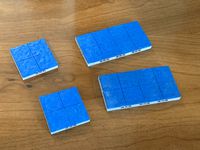
Openforge Water Tile
...ombine with the openforge bases to be compatible with dungeon stone items from devonjones at openforge 2 dungeon stone collection
thingiverse
free

OpenForge Lion Wall by doctordavemorgan
...openforge lion wall by doctordavemorgan
thingiverse
openforge dungeon wall tile with a sculpted lion.
thingiverse
free

OpenForge 2.0 doors
...
a few alternative door to use with openforge 2.0 cut stone square door by devon jones
https://www.thingiverse.com/thing:1722459
thingiverse
free

Openforge Sewers by devonjones
...penforge and masterwork tools at our:
online catalog and backer site
website
forums (mostly we use facebook now)
twitter
facebook
thingiverse
free

OpenForge Pillar by DROP_DB
...he openforge pillar by devonjones. it has simply been cut it half and laid on its side so that it can be printed without support.
thingiverse
free

Trapdoor Openforge compatible by PatG
...trapdoor openforge compatible by patg
thingiverse
a very basic 1x1 trapdoor based on the openforge stone and wood tiles.
thingiverse
free

OpenForge Secret Doors by jpacek
... it to the excellent openforge designs. thank you devon jones!
based on openforge walls https://www.thingiverse.com/thing:178621
thingiverse
free
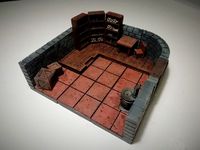
OpenForge Wooden Platform
...orm to fit in the openforge rounded corners. added 3 options, its great for a little change in scenery, i use them al the time :)
thingiverse
free

OpenForge Stairs by doctordavemorgan
... are scaled right, but to make them fit with the other openforge tiles, just scale them so they are 50mm wide. posted by request!
Reusable
turbosquid
$7

Virus Slim Reusable Head Mask Respirator - 3D Print
...r - 3d print for download as ma, dae, fbx, gltf, obj, and stl on turbosquid: 3d models for games, architecture, videos. (1535191)
3d_ocean
$12

3D classic lightbulb
...classic lightbulb 3docean bulb clean filiment glass light lightbulb reusable stunning usefull a 3d classic lightbulb, complete with sparks...
3d_export
$8

rpg-32 barkas
...rpg-32 barkas 3dexport rpg-32 barkas is a reusable russian multicaliber hand-held anti-tank grenade launcher.<br>caliber 72 and 105...
3d_export
$12
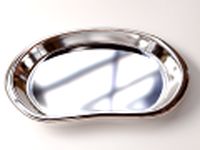
Kidney Basin 3D Model
...basin dish surgery surgical dental medical tray emesis waste reusable nursing dentist doctor vomit vomiting bowl hospital equipment tool...
3d_export
$15
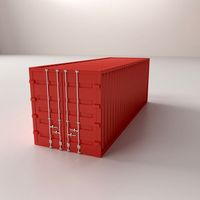
Freight Container 3D Model
...container 3d model 3dexport shipping container freight intermodal transport reusable transportation cargo shipment ship rail storage steel box crate...
3d_export
$10

Glass Jar 3D Model
...glass jar 3d model 3dexport glass jar reusable jam cylindrical cylinder bottle kitchen container food water packing...
3d_ocean
$15

Prototype Mobile Game Set - Creature : Zombie_2
...games high quality indoor lowpoly mmorpg mobile painted prototype reusable rpg set stylized texture world of warcraft zombie here...
3d_ocean
$15

Prototype Mobile Game Set - Creature : Zombie_1
...games high quality indoor lowpoly mmorpg mobile painted prototype reusable rpg set stylized texture world of warcraft here is...
3d_ocean
$15

Prototype Mobile Game Set - Creature : Skeleton
...games high quality indoor lowpoly mmorpg mobile painted prototype reusable rpg set skeleton stylized texture world of warcraft here...
3d_ocean
$10
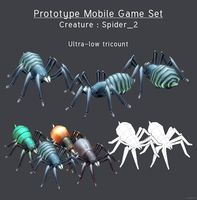
Prototype Mobile Game Set - Creature : Spider_2
...games high quality indoor lowpoly mmorpg mobile painted prototype reusable rpg set spider stylized texture world of warcraft here...
Risers
archibase_planet
free

Riser
...riser
archibase planet
tread rise stair riser riser
stair riser - 3d model (*.gsm+*.3ds) for interior 3d visualization.
turbosquid
$29

riser
...ty free 3d model riser for download as 3ds, obj, c4d, and fbx on turbosquid: 3d models for games, architecture, videos. (1399347)
turbosquid
$29

riser
...ty free 3d model riser for download as 3ds, obj, c4d, and fbx on turbosquid: 3d models for games, architecture, videos. (1399325)
turbosquid
$29

riser
...ty free 3d model riser for download as 3ds, obj, c4d, and fbx on turbosquid: 3d models for games, architecture, videos. (1399318)
archive3d
free
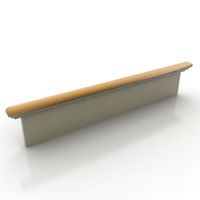
Riser 3D Model
...read rise stair riser riser
stair riser - 3d model (*.gsm+*.3ds) for interior 3d visualization.
turbosquid
$29

press riser
...e 3d model press riser for download as 3ds, obj, c4d, and fbx on turbosquid: 3d models for games, architecture, videos. (1399322)
turbosquid
$29

press riser
...e 3d model press riser for download as 3ds, obj, c4d, and fbx on turbosquid: 3d models for games, architecture, videos. (1399315)
turbosquid
$29

Retail Fixture Riser
...l retail fixture riser for download as c4d, 3ds, fbx, and obj on turbosquid: 3d models for games, architecture, videos. (1659256)
3d_export
$80

Lower marine riser package cap 3D Model
... cap ship oil rig drilling offshore platform gulf mexico petroleum
lower marine riser package cap 3d model tartino 25366 3dexport
3d_export
$13

ROPE WINCH WINDLASS TURNSTILE HOIST LIFT ELEVATOR RISER
...antasy and other medieval games. - fbx + obj + 3ds formats inluded. - no visible repetitions of texture pattern or mirror effect.
Tile
archibase_planet
free
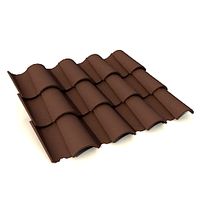
Tiles
...tiles
archibase planet
roof tiling tiled roof
tile fragment - 3d model for interior 3d visualization.
3d_export
$5

Tile
...tile
3dexport
tile in house
3d_export
free

tiles
...tiles
3dexport
design of tiles in different files
archibase_planet
free
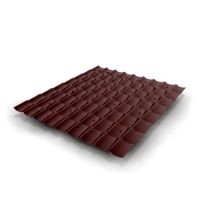
Tiling
...tiling
archibase planet
roof tiling roofing
tiling n150708 - 3d model (*.gsm+*.3ds) for interior 3d visualization.
archibase_planet
free

Tile
...rchibase planet
tiling roofing roof covering rooting material
tile roof n161011 - 3d model (*.3ds) for exterior 3d visualization.
3d_ocean
$2
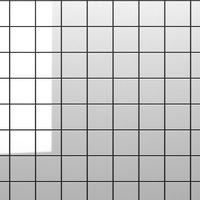
Tiles
...he height, width, tile color, mortar color, mortar size, glossyness, roughness, flatness of the surface of the tiles are variable
3d_ocean
$2
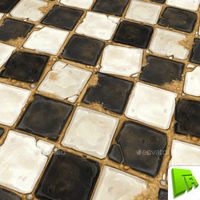
Broken Tiles
...png poly texture tile tiling wow
tiling hand painted broken tile texture. comes with one flat 512×512 png file of tiling texture.
3d_ocean
$6
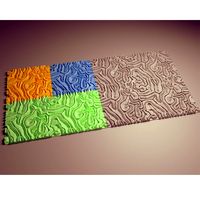
Decorative tiles
...h can be 3d printed also.i have added 3d printable format also (.stl),also there are 3 sizes available 12×12,14×14 ,16...
turbosquid
$9
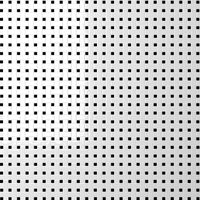
Tiles
...royalty free 3d model tiles for download as max, max, and fbx on turbosquid: 3d models for games, architecture, videos. (1552013)
3ddd
$1
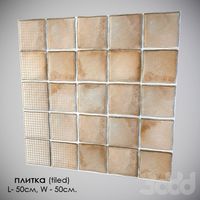
плитка (tiled)
...плитка (tiled)
3ddd
плитка
плитка (tiled)
Compatible
turbosquid
$3

Genesis 8 Clothing 1 dForce Compatible
... available on turbo squid, the world's leading provider of digital 3d models for visualization, films, television, and games.
turbosquid
free

Genesis 8 Clothing Top 1 dForce Compatible
...nesis 8 clothing top 1 dforce compatible (2) for download as on turbosquid: 3d models for games, architecture, videos. (1217671)
turbosquid
$50

Screwdriver Latch Type CSC Torx compatible with Straumann
...sc torx compatible with straumann for download as obj and stl on turbosquid: 3d models for games, architecture, videos. (1370064)
3d_export
$9

cad compatible casual woman hand model f1p3d1v1hand
...s: stl, obj, fbx<br>models with quad-topology (1100 quads) are also included (f1p3d1v1hand_quad.obj, f1p3d1v1hand_quad.fbx)
3d_export
$38

uzaki rigify
...uzaki rigify 3dexport compatible-blender ...
3d_export
$5

cloud lowpoly 3d
...cloud lowpoly 3d 3dexport lowpoly 3d format fbx compatible with unreal and...
3d_export
$5

flower lowpoly 3d
...flower lowpoly 3d 3dexport lowpoly 3d format fbx compatible with unreal and...
3d_export
$5

rocks lowpoly 3d
...rocks lowpoly 3d 3dexport lowpoly 3d format fbx compatible with unreal and...
3d_export
$10
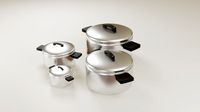
pots
...pots
3dexport
pots<br>modeled in blender<br>compatable with evee and cycels
3d_ocean
$95
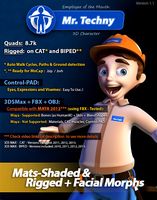
Mr Techny
...for 3ds max 2010 and later – biped (2010 compatible and cat (2011 compatible) versions incluided. for maya 2012...
Bases
archibase_planet
free
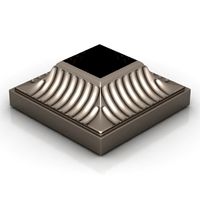
Base
...base
archibase planet
base column column base
base 1 - 3d model (*.gsm+*.3ds) for interior 3d visualization.
archibase_planet
free

Base
...base
archibase planet
base column base column
base 5 - 3d model (*.gsm+*.3ds) for interior 3d visualization.
archibase_planet
free
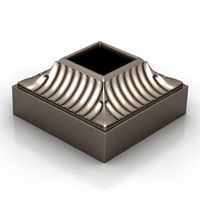
Base
...base
archibase planet
base column column base
base 7 - 3d model (*.gsm+*.3ds) for interior 3d visualization.
archibase_planet
free
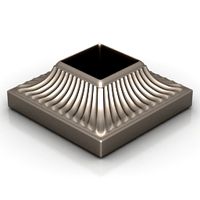
Base
...base
archibase planet
base column column base
base 2 - 3d model (*.gsm+*.3ds) for interior 3d visualization.
archibase_planet
free
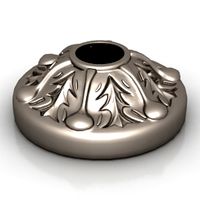
Base
...base
archibase planet
base column column base
base 3 - 3d model (*.gsm+*.3ds) for interior 3d visualization.
archibase_planet
free
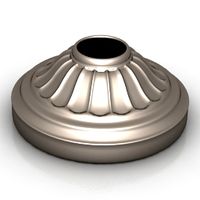
Base
...base
archibase planet
base column column base
base 4 - 3d model (*.gsm+*.3ds) for interior 3d visualization.
archibase_planet
free

Base
...base
archibase planet
base column base column
base 6 - 3d model (*.gsm+*.3ds) for interior 3d visualization.
archibase_planet
free
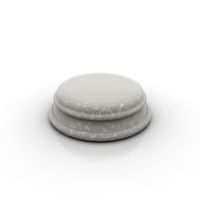
Base
...base
archibase planet
foundation base
column base ionic - 3d model (*.gsm+*.3ds) for interior 3d visualization.
archibase_planet
free
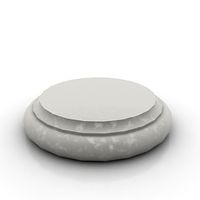
Base
...base
archibase planet
foundation base
column base tuscan - 3d model (*.gsm+*.3ds) for interior 3d visualization.
design_connected
$18
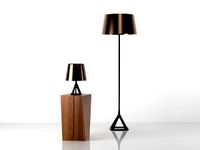
Base
...base
designconnected
tom dixon base computer generated 3d model. designed by dixon, tom.
